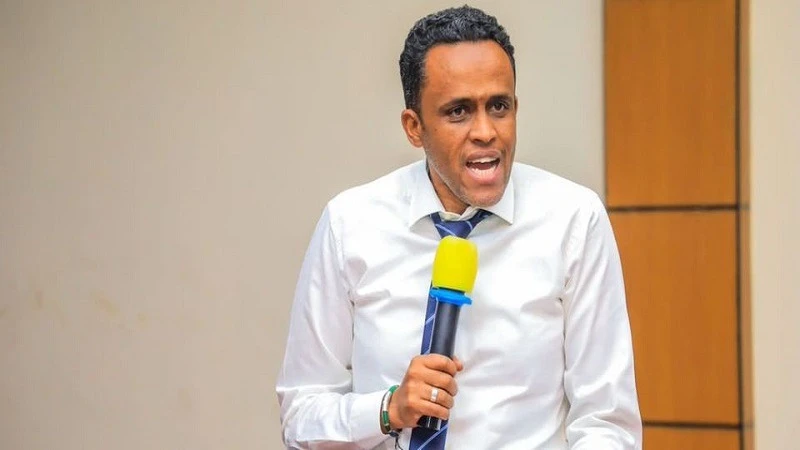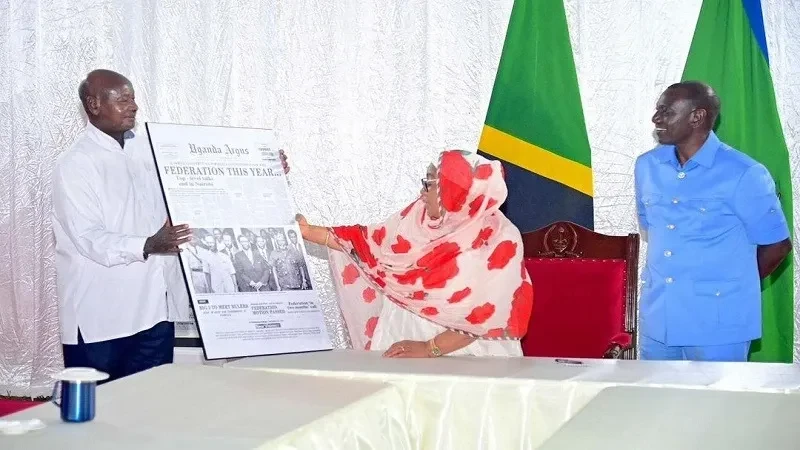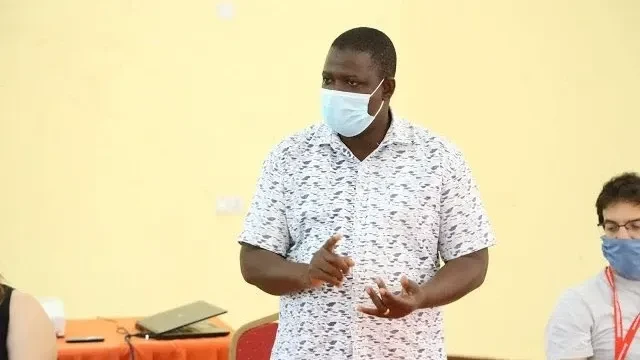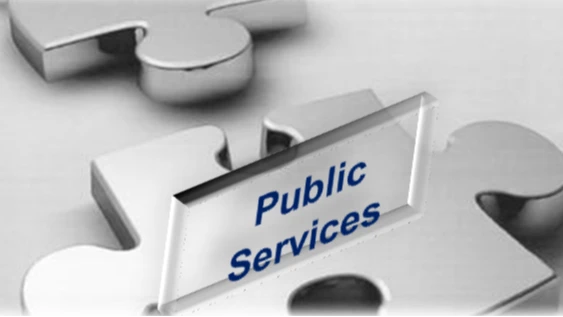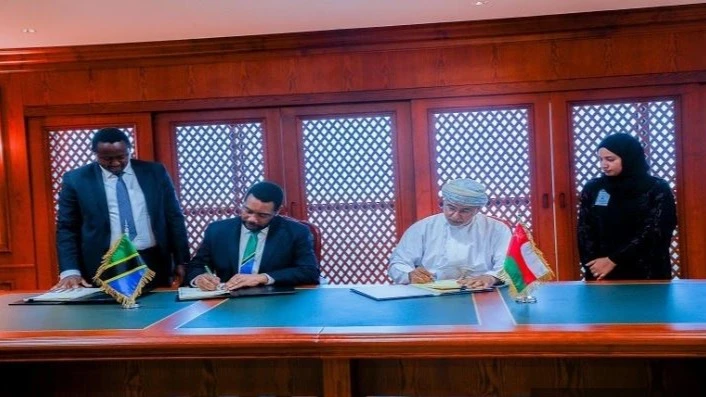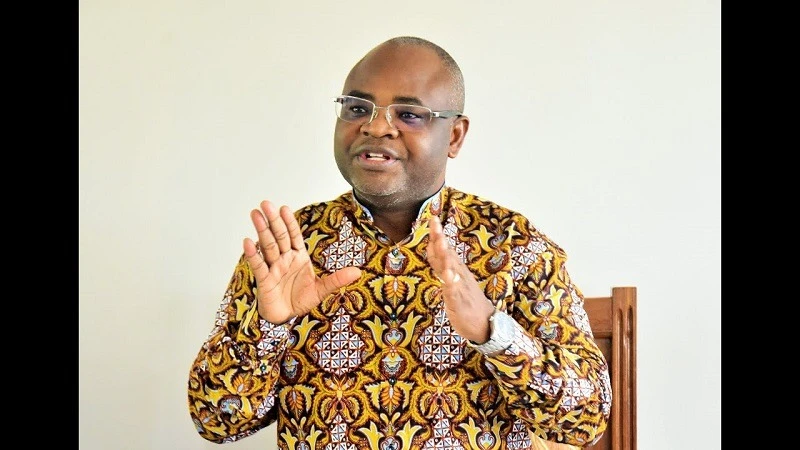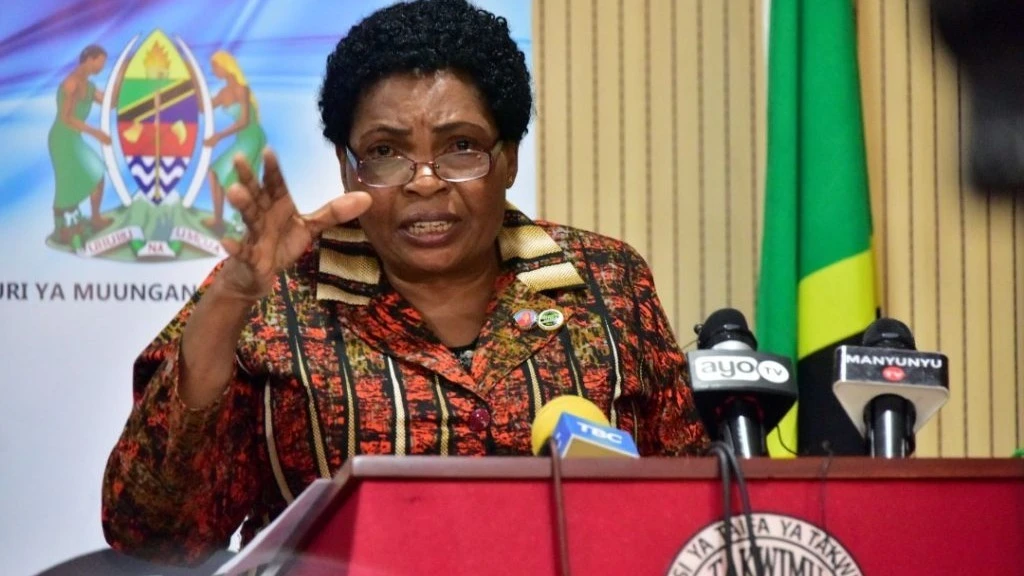Tanzanian scholar goes transforming water science and inspiring girls
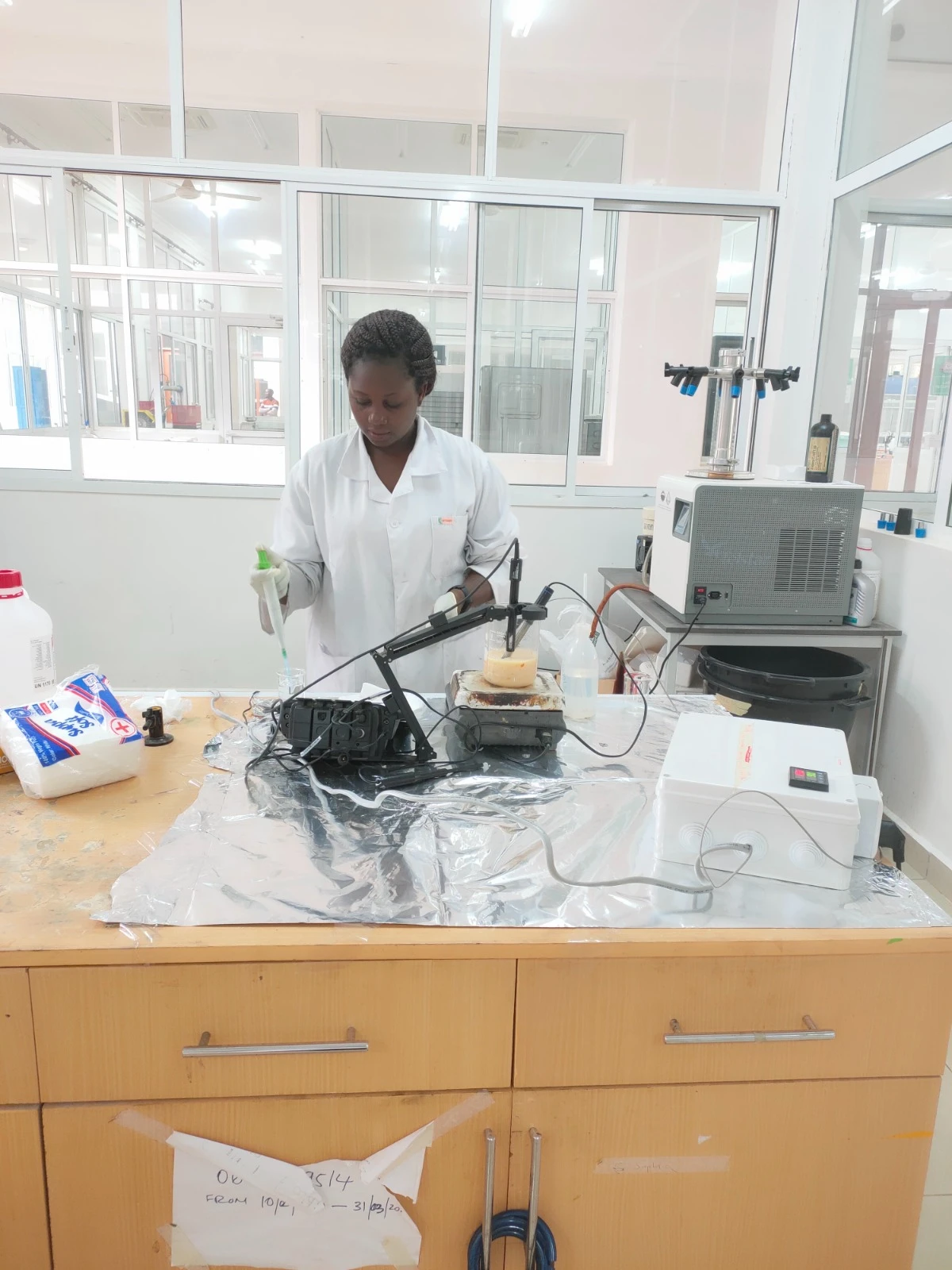
A Tanzanian woman is reshaping science and empowering young girls to imagine new possibilities for their future. It is none other than Dr Tusekile Alfredy (pictured), a Regional Scholarship and Innovation Fund (Rsif) scholar whose groundbreaking research is paving the way for future generations of girls. In this recent online interview with Rsif Senior Communications Officer Janet Otieno, she touches on the highlights of her journey. Excerpts:
Question: What hooked you, so to speak, into pursuing a career in Material Science and Engineering – and what do you see as the high points of your journey into research?
Answer: My research journey is deeply rooted in my own experience, including the challenges I faced when growing up. I pursued both my MSc and PhD in Materials Science and Engineering at the Nelson Mandela African Institution of Science and Technology. This is based in Arusha city, Tanzania. My research focuses on water treatment, specifically using cost-effective materials sourced locally and transforming waste into valuable resources.
I was inspired to explore water treatment chiefly owing to the struggles I experienced growing up in a village where access to clean and safe drinking water was a constant challenge. In my village, we had only two water options: a river and a spring. Although people believed that spring water was clean and safe going by its clear appearance, in reality we had no proper treatment methods.
River water, which was used for domestic purposes, required long journeys to fetch. My sisters and I would walk hours each day to bring water home, a burden that is typically the lot of women and girls in many African cultures.
Three key words – health, gender and education –always come to my mind when I think about water. These experiences ignited my passion for water research. Growing up in an area affected by high fluoride levels in the water further fuelled my dedication.
Fluoride contamination in Arusha Region, most especially in the Meru District, causes significant health issues such as dental fluorosis, a condition that affected my very own daughter. Watching her teeth change colour daily was alarming, and I realised the connection this had with fluoridated water. I switched to bottled water for her, which ultimately inspired my PhD research on fluoride removal. Facing these real-life challenges motivated me to focus on developing effective water treatment methods, hoping to alleviate water scarcity and protect people from water-related health issues.
Did you face any challenges along the way? How did you overcome them?
Yes, challenges in research are inevitable, especially when balancing the roles of a mother, wife and researcher. It can be quite demanding, but all of these roles are incredibly important to me. To overcome them, I firmly committed to myself that nothing would stand in the way of achieving my dreams. With careful planning, I worked to balance my responsibilities and, through perseverance and faith, I managed them very well.
What is your current research all about and what inspired you to choose the particular field?
Currently, I am an investigator on a project entitled “FLOW CAPACITIVE DEIONISATION FOR GREEN REMOVAL AND RECOVERY OF AMMONIUM/AMMONIA FROM WASTEWATER”. This is primarily meant to contribute in addressing the challenge of costly and energy-intensive removal and recovery of ammonium/ammonia from wastewater using a chemical-free and low-energy technology known as flow capacitive deionisation (FCDI).
What inspired me to pursue this research is the dual benefit it offers. The process removes ammonia from wastewater and recovers it, providing both environmental and economic advantages. This approach allows for the simultaneous treatment of wastewater and the collection of concentrated ammonia, creating a circular-economy solution that is both sustainable and efficient.
How do you see your research contributing to solving real-world problems, particularly in Africa or other developing regions?
In developing countries like Tanzania, where agriculture is the backbone of the economy, fertilisers are essential for achieving high crop yields. My research on the recovery of ammonia using the FCDI system at a larger scale offers a promising solution for the local production of fertilisers. This initiative has the potential to greatly improve agricultural productivity, reduce reliance on imported fertilisers and enhance food security. By aligning with the agricultural priorities of Tanzania and other sub-Saharan African nations, this project directly supports the region’s economic development goals and contributes to its efforts towards sustainable growth.
In what ways do you think your research could impact or empower girls and women, either directly or indirectly?
My research has the potential to empower girls and women both directly and indirectly in several meaningful ways.
Water Access and Health: In many developing regions, women and girls are often responsible for fetching water. By developing efficient and sustainable water treatment solutions like FCDI, we can improve water quality and reduce the time and effort needed to access safe drinking water. This would alleviate the daily burden of water collection, freeing up time for education, economic activities and personal development generally.
Agricultural Empowerment: By promoting the local production of fertilisers from recovered ammonia, the project can enhance agricultural productivity. Since many women in rural areas are engaged in farming, access to affordable, locally produced fertilisers could help improve their crop yields and income. Empowering women in agriculture can contribute to their financial independence and enhance food security for their families and communities.
Role Models in STEM: As a woman leading a research project in STEM, my work could inspire and encourage other women and girls to pursue careers in science and engineering. By demonstrating the impact of women’s contributions to solving real-world challenges, I hope to motivate more women to enter and excel in fields where they are often underrepresented.
[STEM is an acronym standing for science, technology, engineering and mathematics. It is an approach to learning and development that focuses on developing skills like problem-solving, critical analysis, creativity and teamwork.]
Do you believe that your work can help inspire more young girls to pursue education and careers in STEM? If so, how?
Indeed, I strongly believe that my work can help inspire more young girls to pursue education and careers in STEM. There are several ways in which this research and my own journey can serve as a source of inspiration.
One is Representation and Role Modelling. Seeing women leading innovative research projects in STEM can be a powerful motivator for young girls. My journey from growing up in a village with limited resources to becoming a researcher tackling global environmental challenges shows that it is possible for women to excel in STEM. When girls see someone they can relate to, it can help break the stereotype that STEM fields are exclusively for men.
Two is Relevance to Real-World Issues. The research I am engaged in directly addresses real-world problems, such as water purification and sustainable agriculture, which are particularly relevant to communities in developing regions. Demonstrating the tangible impact STEM can have on improving people’s lives and the environment can inspire girls to pursue careers in fields where they can make a meaningful difference through inspiration and mentorship.
As a successful scholar, what advice would you give to young girls with dreams of pursuing higher education and careers in sciences?
My advice to young girls dreaming of pursuing higher education and careers in the sciences would be that they should believe in themselves. Girls should believe that they can achieve their goals, no matter how challenging that may seem. Sometimes, they can face obstacles, but they will triumph if they trust in their abilities and stay focused on their dreams. Confidence in their potential is the key to pushing through difficult moments. Additionally, they should remain curious and never stop learning as, after all, science is all about curiosity and discovery. They should keep asking questions, stay open to learning new things and desist from being afraid to explore areas that interest them. Each challenge they encounter will teach them something valuable that will bring them closer to the realisation of their goals.
Do you have a female mentor who has influenced your career path? How important do you think role models are for young girls?
Yes, I do have a female mentor who has significantly influenced my career path – and it is Professor Tatiana Pogrebnaya. She was my supervisor during my MSc studies but, beyond that, she became a mentor and a mother figure to me. Her constant encouragement, leadership and support were key to making my academic journey the success story I believe it is. Whenever I faced challenges in my research, she knew how to lift my spirits and guide me through difficult times, always fostering an environment in which I could excel.
Mentors are incredibly important, especially for young girls in STEM. They provide guidance and encouragement alongside serving as role models, helping to shape the next generation of researchers and pushing the boundaries of successful research even further. A mentor can inspire confidence and resilience, which are essential for overcoming challenges in the field.
What does the International Day of the Girl Child (Oct 11) mean to you this year, and how do you connect it to your work or personal journey?
The International Day of the Girl Child holds profound personal significance for me, as it evokes memories of my own childhood and the challenges I witnessed. I remember that my mother was unable to read because she was not allowed to attend school and was forced into marriage, while my uncles had access to education. The Day serves as a powerful reminder that girls have the right to education and should be empowered equally, just as boys are.
Additionally, during my secondary school years, I was often told that girls could not excel in science subjects. I was determined to challenge that notion and prove that it is indeed possible. I vividly recall that during my bachelor’s degree in mathematics, only three girls were among 30 students in the class. The International Day of the Girl Child is important to me because it symbolises the progress and value of being a woman and reinforces the need for equal opportunities for girls, especially in the Education and STEM fields.
How do you envision your research contributing to a better future for the next generation of girls?
I envision my research contributing to a better future for the next generation of girls by addressing real-world problems that directly impact their lives. By developing sustainable and effective solutions to challenges such as water scarcity and pollution, I hope to inspire young girls to engage with these issues and empower the girls to crusade for change.
I see myself as a role model and an ambassador for girls who have not fully realised their rights. My work is chiefly meant to demonstrate that, through education and innovative research, we can create a future where girls are not only empowered but also equipped to overcome the challenges previous generations have faced. By paving the way for improved access to clean water and sustainable resources, I hope to contribute to a world where the next generation of girls can thrive and realise their full potential.
What are the future goals for your research, and how do you hope it will continue to create change or drive impact?
My future goal in research is to become a leading female researcher known for innovative findings that address real-world challenges facing both local communities and the global population. I aspire to be a researcher who is adaptable to market needs, transforming ideas into viable solutions contributing to economic development within my country.
Additionally, I hope to collaborate with researchers and institutions in developed countries to learn from their advancements and adopt practices that can significantly enhance the well-being of my community. By bridging the gap between innovative research and practical applications, I am determined to drive meaningful change and create lasting impact through my work.
How would you like to see more women and girls supported in STEM or academic research in the future?
I would like to see more women and girls supported in STEM and academic research through targeted initiatives that address both practical challenges and cultural barriers. This includes encouraging girls from a young age to explore STEM fields by providing access to resources, hands-on science programmes and strong role models. Implementing gender-sensitive policies, such as flexible work schedules, parental leave and childcare support in academic institutions, is essential to help women balance their careers with personal responsibilities. Establishing networks and professional associations for women in STEM is also vital for fostering collaboration and mentorship. Furthermore, allocating specific funding and grants for women-led research projects, particularly in fields like water treatment and sustainability will drive impactful innovation. Showcasing successful women in STEM as role models can inspire the next generation, while supporting STEM programmes in underserved areas will help bridge educational gaps and empower girls from diverse backgrounds to pursue careers in science and technology.
* Rsif is the flagship programme of the Partnership for Skills in Applied Sciences, Engineering and Technology (PASET), an Africa-led, World Bank-affiliated initiative managed by the Nairobi-based International Centre of Insect Physiology and Ecology(Icipe) and the Regional Coordination Unit.
Top Headlines
© 2024 IPPMEDIA.COM. ALL RIGHTS RESERVED


